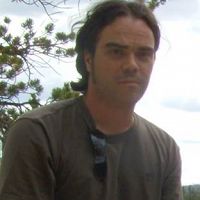Orlando et al., 2016
Architecture of the deep critical zone in the Río Icacos watershed (Luquillo Critical Zone Observatory, Puerto Rico) inferred from drilling and ground penetrating radar (GPR)
Joe Orlando, Xavier Comas, Scott Hynek, Heather L. Buss, and Sue L. Brantley (2016)
Earth Surface Processes and Landforms
-
Luquillo, GRAD STUDENT
-
Luquillo, Shale Hills, INVESTIGATOR, COLLABORATOR
-
Luquillo, Shale Hills, INVESTIGATOR
-
Luquillo, INVESTIGATOR
-
National, Eel, Luquillo, Shale Hills, INVESTIGATOR, COLLABORATOR
Abstract
In the critical zone, surficial bedrock interactions result in the formation of a mantle of chemically- and physically-altered material defined here as regolith. In the watershed of the Río Icacos, an upland river draining the Luquillo Mountains in tropical Puerto Rico, we explored the influence of lithology (quartz diorite versus hornfels-facies volcaniclastic rock) on weathering. Regolith profiles were studied by drilling boreholes and imaging the subsurface using ground penetrating radar (GPR). Overall, the regolith structure is not laterally continuous but rather is punctuated by zones of deep fractures that host in situ weathering, corestones, and colluvial material. GPR images of these vertical zones show reflectors at 15–20 m depth. Thus, the architecture of the critical zone in the upper Luquillo Mountains is highly dependent on lithology and its influence on fracture development. At the highest elevations where hornfels overlies quartz diorite, positive feedbacks occur when the water table drops so that oxidative weathering of biotite in the more felsic rock creates microfractures and allows deeper infiltration of meteoric waters. Such exposure results in some of the fastest weathering rocks in the world and may contribute to formation of the knickpoint in the Río Icacos watershed. This work represents the first study combining GPR and drilling to look at the structure of the deep critical zone and demonstrates: (1) the importance of combining direct methods (such as drilling) with indirect methods (such as GPR) to understand the architecture of the critical zone in tropical systems; (2) the interplay of the surficial stress regime, lithology and climate in dictating the architecture of weathering.
Citation
Joe Orlando, Xavier Comas, Scott Hynek, Heather L. Buss, and Sue L. Brantley (2016): Architecture of the deep critical zone in the Río Icacos watershed (Luquillo Critical Zone Observatory, Puerto Rico) inferred from drilling and ground penetrating radar (GPR). Earth Surface Processes and Landforms. DOI: 10.1002/esp.3948
 This Paper/Book acknowledges NSF CZO grant support.
This Paper/Book acknowledges NSF CZO grant support.
Explore Further





